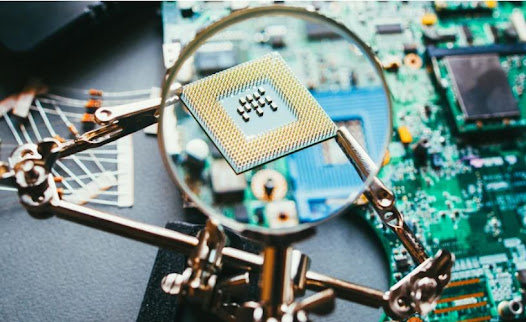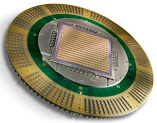In recent years, global supply chains have faced unprecedented challenges: raw material price fluctuations, logistics bottlenecks, geopolitical tensions, increasingly stringent environmental regulations, and additional tariffs imposed by the United States on Chinese imports. These factors not only affect supply chain stability but also place higher demands on high-end PCB manufacturers.
So, how can high-end PCB manufacturers stand out amid these global challenges, maintain competitiveness, and deliver sustained value to customers?
✅ 1. Strengthening Supply Chain Resilience and Diversifying Procurement Strategies
Amid raw material shortages and price volatility, leading PCB manufacturers have adopted diversified supply chain strategies:
- Global Supplier Network: Establish long-term partnerships with multiple suppliers to reduce reliance on single-source suppliers.
- Localized Supply Chains: Set up supply chain nodes in key markets to minimize cross-border logistics complexities and time costs.
- Optimized Inventory Management: Improve inventory control and raw material reserves to cushion against market volatility.
📌 For example, in critical materials like copper foil, resin, and fiberglass, many high-end PCB manufacturers collaborate with multiple suppliers to ensure continuous and stable material supplies.
✅ 2. Addressing U.S.-China Trade Tariffs and Policy Challenges
In recent years, the U.S. has imposed additional tariffs on PCB products imported from China, placing significant cost pressures on manufacturers. However, challenges often bring opportunities:
- Diversified Production Locations: Establish production bases in Southeast Asia or other regions to bypass tariff-related costs.
- Optimized Product Portfolio: Focus on high-value, high-tech PCB products to counterbalance tariff impacts.
- Enhanced Customer Communication: Maintain transparent communication about tariff implications and provide tailored solutions.
📌 For instance, high-end manufacturers are investing more in technology and value innovation to offset pricing disadvantages caused by tariffs.
✅ 3. Intelligent Manufacturing and Digital Factories
Smart manufacturing is a crucial tool for high-end PCB manufacturers to handle supply chain challenges effectively:
- Digital Factories: Utilize IoT, AI, and big data analytics to monitor and optimize production processes.
- Automation: Implement highly automated systems to reduce human errors and improve efficiency.
- Predictive Maintenance: Use data analytics to predict equipment issues and minimize downtime.
📌 For example, many advanced PCB factories now have full-process traceability, enabling complete control over every production stage.
✅ 4. Environmental Compliance and Sustainable Development
With increasingly stringent global environmental regulations, sustainability is a critical focus for manufacturers:
- Eco-Friendly Materials: Choose recyclable raw materials to minimize environmental impact.
- Wastewater and Emission Treatment: Implement advanced systems to meet environmental standards.
- Energy Efficiency: Optimize production workflows to reduce energy consumption and carbon footprints.
📌 Sustainability is not only a corporate responsibility but also a key differentiator in long-term competitiveness.
✅ 5. Customization and Value-Added Services
In high-end markets, customers demand exceptional performance and reliability from PCBs:
- Customized Design: Work closely with clients to offer tailored solutions from design to production.
- Rapid Response: Maintain efficient customer feedback systems for timely resolution of issues.
- Value-Added Services: Offer technical support, training, and after-sales service to enhance customer value.
📌 For example, in industries like medical electronics, aerospace, and automotive, high-end PCB manufacturers act as strategic partners, not just suppliers.
✅ 6. Talent Stability and Continuous Innovation
Talent is the driving force behind innovation and growth:
- Ongoing Training: Regular training programs ensure technical excellence across teams.
- R&D Investment: Increase funding for new material and process innovations.
- University Partnerships: Collaborate with academic institutions to attract and nurture talent.
📌 Skilled professionals are essential for solving current technical challenges and driving future growth.
✅ 7. Building Strong Brand Trust and Market Reputation
In times of uncertainty, brand trust becomes a decisive factor:
- Transparent Communication: Maintain open communication with clients about supply chain strategies.
- Reliable Delivery: Ensure consistent quality and timely product delivery.
- Customer Success Stories: Share case studies demonstrating tangible results for clients.
📌 A strong market reputation is built on transparency, consistency, and trust.
🚀 Our Commitment
In these challenging times, we remain committed to:
✅ Strengthening supply chain resilience to reduce risks.
✅ Addressing tariff challenges with optimized strategies.
✅ Advancing smart manufacturing for higher efficiency.
✅ Upholding environmental responsibility and sustainable practices.
✅ Delivering tailored PCB solutions to meet the most demanding requirements.
No matter how the market evolves, we will continue to provide exceptional product quality and reliable services to create lasting value for our global customers.
🤝 Let’s Connect!
Are you facing challenges with your PCB supply chain or manufacturing processes?
💬 Get in touch with us today!
#PCB #SupplyChainManagement #SmartManufacturing #Sustainability #IndustryInsights #HighEndPCB #USChinaTrade #TariffPolicy #ValueInnovation























